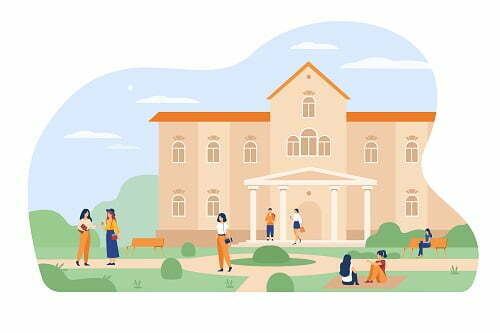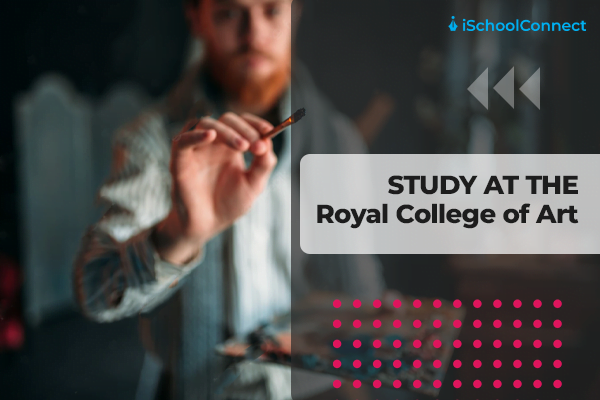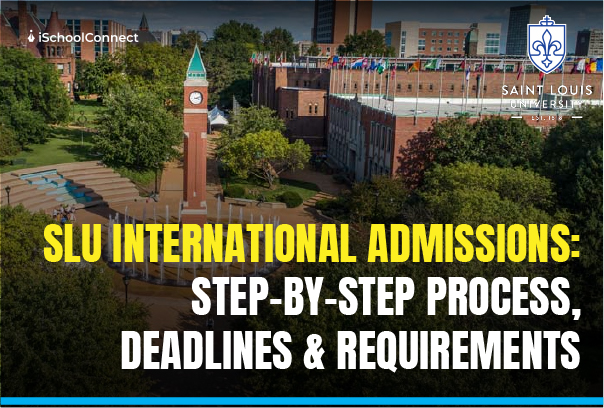Table of Contents
The RCA was founded in 1837 at Somerset House as the Government School of Design or Metropolitan School of Design. In September 1896, the institution changed its name to the Royal College of Art. The emphasis on education switched to the profession of art and design. Graphic design, industrial design, and product design education originated in the mid-twentieth century. In the 1960s, the school grew more. In the 1960s, the school grew more. With the Royal Charter grant in 1967, it became an autonomous university, which gives authority to offer its degrees.
Royal College of Art ranking

According to the fashion website ‘Business of Fashion’, the Royal College of Art is ranked first on the list of master’s degrees in fashion
At QS World University ranked first in the art and design category RCA achieved this ranking for the seventh year in a row, with an exceptional overall score of 98.9 out of 100.
The RCA had at the top in a list of UK graduate art schools prepared by Modern Painters magazine, from a poll of art world experts. In April 2011. In the December 2008 Research Assessment Exercise, 40% of the RCA’s research output achieved the highest rating.
Courses
RCA provides a Graduate Diploma pre-masters conversion curriculum and MA, MRes, MPhil, and Ph.D. degrees in twenty-eight academic areas split into four schools: architecture, arts & humanities, communication, and design. The Victoria and Albert Museum collaborates on the history of design curriculum. The Imperial College London has two double MA/MSc programs.
Over 2,100 master’s and doctorate students from 75 countries are connecting with over 1,000 professionals, including professors, renowned art & design practitioners, experts, mentors, and prominent visitors. The RCA is the world’s largest concentrated community of artists, designers, and communicators.
Royal College of Art master’s program
- Architecture: The architecture programme encompasses a wide and complex set of practices that go beyond the field’s traditional boundaries and limitations. By developing an autonomous and critical mentality among its students, the programme expands the possibilities of architecture and its influence on society.
- Animation: Develop your creative expertise to influence how audiences see and understand the social, political, and cultural animated worlds and experiences you create.
- Architecture Pathway: The RCA Architecture Pathway enhances the shared arts and humanities research techniques covered throughout the College as part of the MRes RCA by conducting training in practice-led and practice-based research approaches.
- Ceramics & Glass: The RCA’s Ceramics & Glass department is driven by a conviction in the transformational potential of material thought, research, and creation to empower a new generation of artists and designers to enrich our environment in inventive and meaningful ways.
- City Design: Envisioning new concepts of city and urban life by placing design speculation at the core of social innovation.
- Communication Design Pathway: The MRes RCA Communication Design Pathway will teach you about practice-led and experimental research processes, procedures, and methodologies that are used to inform communication design research.
- Contemporary Art Practice: Current Art Practice (CAP) at the RCA is a cutting-edge MA programme in the School of Arts & Humanities that is guided by a post-medium, critical approach to the creation and consumption of art, in which theory and practice collide to create new methods of reacting to the contemporary environment.
- Curating Contemporary Art: Curating is a creative, dynamic, and diversified activity that evolves in response to its surroundings, artists’ and cultural practitioners’ work, and audiences’ interests and expectations.
- Design Pathway: The MRes RCA Design Pathway develops design research abilities for use in academic and professional settings. From the future of work to the circular economy, climate change, AI, and healthcare, we stimulate innovation and address complex systems and societal concerns.
- Digital Direction: Develop a deep understanding of critical and experimental media production, creation and design practice.
- Environmental Architecture: Explore the future of landscapes, environments, and ecosystems.
- Fashion: The Fashion MA program asks for a disruptive critical approach, leading to new aesthetics and responses to the industry of fashion.
- Fine Arts & Humanities Pathway: The MRes RCA Arts & Humanities Pathway introduces you to a variety of practice-based research methodologies in order to prepare you for your future professional and research projects, which can vary from painting, sculpture, and performance to ceramics, installation, moving image, and critical writing.
- Global Innovation Design: The course provides an international learning environment as well as a distinct cultural background. Our goal is to give you an experience that is unrivaled anywhere on the planet.
- Healthcare & Design: Gain the tools to lead design innovations in a broad range of healthcare environments
- Information Experience Design: Create multi-media experiences that transform individuals and society.
- Innovation Design Engineering: the programme focuses on the discovery and creation of significant innovation, critical observation, disruptive design thinking, experimentation, research of emerging technologies, advanced engineering, and enterprise activities.
- Interior Design: The Intelligent Mobility MA draws on the RCA’s long history of vehicle design and situates it in the context of a multitude of social, cultural, and technological shifts.
- Painting: Committed to broadening the understanding of painting.
- Photography: An expanded and interdisciplinary art practice with no fixed identity.
- Print: Understand the field of print through making, exhibiting, publishing, discussion and writing.
- Sculpture: A critical environment in which to discuss contemporary issues for making sculpture.
- Service Design: Transform customer and citizen experiences.
- Textiles: Working at the creative interface between materials, making, and meaning.
- V&A/RCA History of Design: Committed to practice-based, public-facing history.
- Visual Communication: Encouraging distinctive voices in communication practice.
- Writing: Develop your intellectual, literary, and technical skills.
Ph.D. programs

- Architecture: The Architecture research program focuses on practice-led and interdisciplinary research with a tangible public and social impact.
- Arts & Humanities: This program provides a dynamic interplay between theory and practice.
- Communication: These research degrees span the full range of communication, design, and media environments.
- Computer Science: From theory to practice, increase the impact of research in industry and society.
- Design: As a research student in the School of Design, you will design an innovative object or system.
- Intelligent Mobility: The Intelligent Mobility research program explores novel vehicle types, services, and integrated city solutions.
- Materials Science: The programme focuses on the development and use of materials to address real-world issues, including environmental sustainability and human health and well-being.
GenerationRCA
The RCA announced the start of their new GenerationRCA initiative in early 2019. It incorporates scientific subjects into the mix of artistic disciplines traditionally on offer. The new programs include Environmental Architecture and Digital Direction. These future programs will focus on nano and soft robotics, computer science, machine learning, material science, and the circular economy.
Takeaways
The College employs around 1,000 professionals from all over the world to teach and develop students in 30 academic programs; exposing them to new knowledge in a way that encourages experimentation.
InnovationRCA, the university’s center for enterprise, entrepreneurship, incubation, and business support has helped over 70 RCA business ideas become a reality that has led to the creation of over 750 UK jobs.
The Royal College of Art has several awards and prizes that it confers to its graduating students. These include the Sheila Robinson Drawing Prize.
We hope you enjoyed reading this blog post. If you have any doubts, you can reach us here.
You can also leave a comment below and share your thoughts.
Liked this blog? Read next: Quotes on art and creativity | 60 amazing quotes for you!
FAQs
Q1. Is it difficult to gain admission to the Royal College of Art?
Answer – The Royal College of Art is a competitive university with a 27.2% acceptance rate. The Royal College of Art has 2,300 students enrolled in the most recent academic year.
Q2. What grades are required for admission to the Royal College of Art?
Answer – All applicants must have an undergraduate degree in a related field, as well as an IELTS of 5.5 overall and a minimum of 5.5 in all components (or equivalent from other approved language proficiency test).
Q3. Is RCA exclusive to Masters?
Answer – The Royal College of Art (RCA) is the world’s first wholly postgraduate university dedicated to research, knowledge sharing, teaching, and practice in the fields of art, design, communication, and the humanities.






